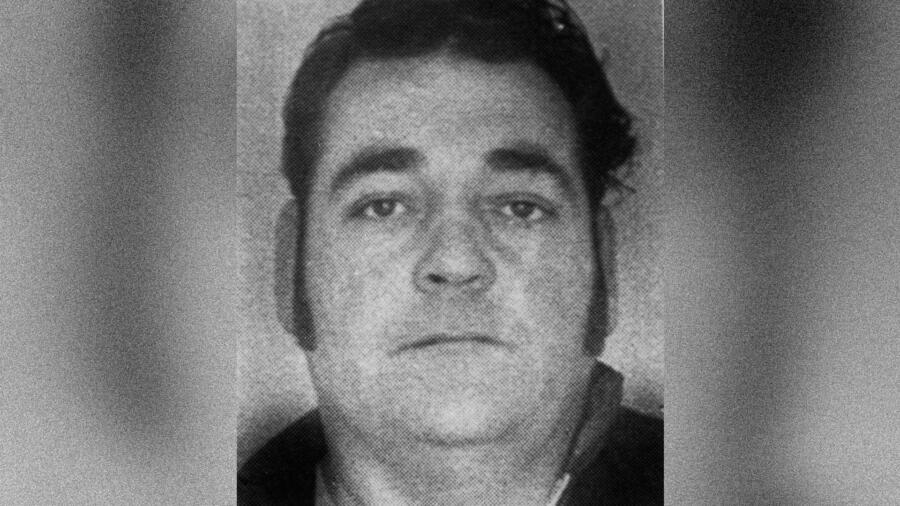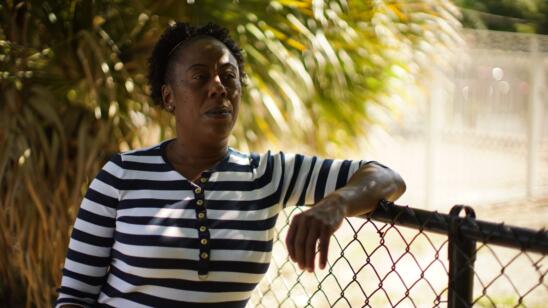Retribution was slow coming to Ken McElroy—but lightning fast when it happened. On a steamy Missouri morning of July 10, 1981, a gunman took aim at the 47-year-old as he sat smoking in his Silverado pickup truck outside the local bar. The larger-than-life bully who menaced the farming community of Skidmore died in seconds. Witnessing the murder were McElroy’s wife, Trena, screaming in the passenger seat and dozens of local residents.
Yet the identity of McElroy’s killer is a public secret Skidmore has kept for 38 years.
Despite the efforts of police, prosecutors and McElroy’s family, no one has been charged in the murder. And it’s likely to stay that way.
“Nobody wanted to talk to us,” retired Missouri State Highway Patrol Trooper Dan Boyer tells A&E True Crime. Boyer was among the first responders to arrive outside the D&G tavern where McElroy was ambushed.
[Stream episodes of Accused: Guilty or Innocent? in the A&E App.]
A reported crowd of up to 60 men had largely dispersed, but some onlookers remained, staring at the pickup. Those who spoke out were taciturn. “‘I didn’t see anything. I don’t know what happened,'” Boyer recalls witnesses saying.
Hog Rustler, Sweet Talker
Ken McElroy was born in 1934, one of 16 children, author Harry MacLean explains in his book In Broad Daylight, an account of the case. His father was a tenant farmer, his mother a housewife swamped with feeding and caring for the sprawling family.
There wasn’t much parental supervision, but McElroy had a knack for taking care of himself. He never finished high school but knew how to hunt, drive fast and navigate the back roads of Nodaway County by his early teens. He put those skills to work rustling hogs and cattle, MacLean recounts.
Charismatic, with jet-black hair and piercing eyes, McElroy could sweet-talk his way around women and had been married three times by his early 40s. His last wife, Trena, became pregnant with their first child at age 14.
Police had charged him with various alleged crimes from stealing hogs to assault, but nothing stuck. One reason was McElroy’s lawyer Richard “Gene” McFadin, a skilled defense attorney who ran rings around inexperienced prosecutors. Another was McElroy’s intimidation tactics, MacLean writes. Once, a farmer who caught Ken red-handed stealing two horses filed charges but “withdrew them after McElroy smashed him across the face with a rifle.”
Stalked Going to Church
Police also felt McElroy’s ire. One night after he pulled a speeding pickup truck over, Boyer came face to face with McElroy. “I had my service weapon drawn, and I wouldn’t have been the least bit surprised if he tried to do something,” Boyer recalls. “His eyes just really put you in defense mode—he really looked like a mean person.”
A few days later, a pickup truck showed up in the wee hours outside Boyer’s remote country house. It cruised up the street, came back and “just sat there for 20 seconds,” says Boyer, adding he couldn’t prove it was McElroy but waited behind a tree with his shotgun just in case.
In 1980, after a misunderstanding about a candy purchase from a Skidmore grocery store involving McElroy’s daughters, McElroy shot popular owner “Bo” Bowenkamp in the neck.
When the call went out, State Police Cpl. Richard Stratton was ready. Stratton knew McElroy from a previous stop when he threatened the trooper with a shotgun. Anticipating McElroy’s typical moves, Stratton waited on a back road near the Kansas border. His hunch paid off, and McElroy found himself handcuffed and charged with assault.
Shortly after, Stratton’s wife Margaret was headed to church when she saw a strange truck in the driveway.
A man who turned out to be McElroy “pointed a shotgun at me,” Margaret tells A&E True Crime. “I didn’t know what to do. I got in the car and was shaking so bad.”
She gathered her strength and put the car in reverse. McElroy began backing out too, then tailed Margaret until she radioed Richard and squad cars showed up.
“I think he treated the whole town of Skidmore that way,” the 78-year-old said, adding she “didn’t feel brave.” But “it got to the point it made me mad.”
Breaking Point
Tensions in Skidmore soared as McElroy’s trial neared. McElroy mounted a daily vigil outside Bowenkamp’s house, his daughter Cheryl Brown recounts in In Broad Daylight:
“The town emptied out every time he came to town. Everyone was so uncomfortable and scared.”
In court, Bowenkamp testified about how McElroy confronted him in the loading dock of the grocery while he was cutting up boxes and shot him in the neck. Then McElroy, described by veteran journalist Phil Conger as “a big brute of a guy with slicked-back hair like Elvis,” took the stand. He testified that Bowenkamp attacked him with a knife and he acted in self-defense, MacLean writes.
The verdict was second-degree assault and two years.
The “final straw for Skidmore was when he was let out on bond. He went back home and was shot within a couple of days,” explains Conger, editor of the Bethany Republican-Clipper.
Branded as Vigilantes
The morning of July 10, 1981, a group of frustrated and angry men gathered at the Legion Hall in Skidmore, MacLean writes. The meeting broke up after participants learned McElroy and Trena were at the D&G Tavern.
Boyer was out showing a trainee the ropes when he got the call of a shooting in Skidmore. He found a macabre scene. McElroy’s “rear window was shot out and the front window as well. Part of his teeth were lying on the dashboard,” Boyer recalls.
Trena McElroy fingered a local rancher as one of the gunmen, but he denied the claim.
Local police, state investigators and FBI agents tried to break the town’s silence, without success. Meanwhile, major media outlets descended onto Skidmore and reports of its “vigilantes” became water-cooler talk across the U.S.
‘You Know What He Was Like’
For some residents, resentment against McElroy was projected onto the police.
Boyer was taking trajectory measurements at the crime scene when a town official chided him.
The man asked, “what are you doing here?” Boyer remembers. “Why are you doing this? You know what he was like. You know how he oppressed and threatened us. I don’t believe you’re coming now—after we needed your help all this time.”
Trena McElroy accused Skidmore residents of turning her husband into a scapegoat.
“He was a goodhearted person. He’d help anyone that needed to be helped,” she said in an interview recounted in In Broad Daylight.
As of 2019, many of the main players in McElroy’s story have died, including McFadin, Trena McElroy, Bowenkamp and the rancher accused of pulling the trigger, MacLean writes in his blog.
“Theoretically, [the murder] could be re-investigated,” veteran Kansas City criminal defense attorney J.R. Hobbs tells A&E True Crime. “But unless a very credible witness came forward, it’s not likely to happen.”
Related Features:
The Burger Chef Cold Case: Four Murders Still Unsolved Over 40 Years Later
The Tylenol Murders: Is It Too Late to Solve the Famous Cold Case?
Cold Cases That Had Major Breaks in 2018
The Cold Case Murders That Keep Retired Detectives Up at Night
Citizen Detectives Uncover Crime Clues on Websleuths Online Forum


